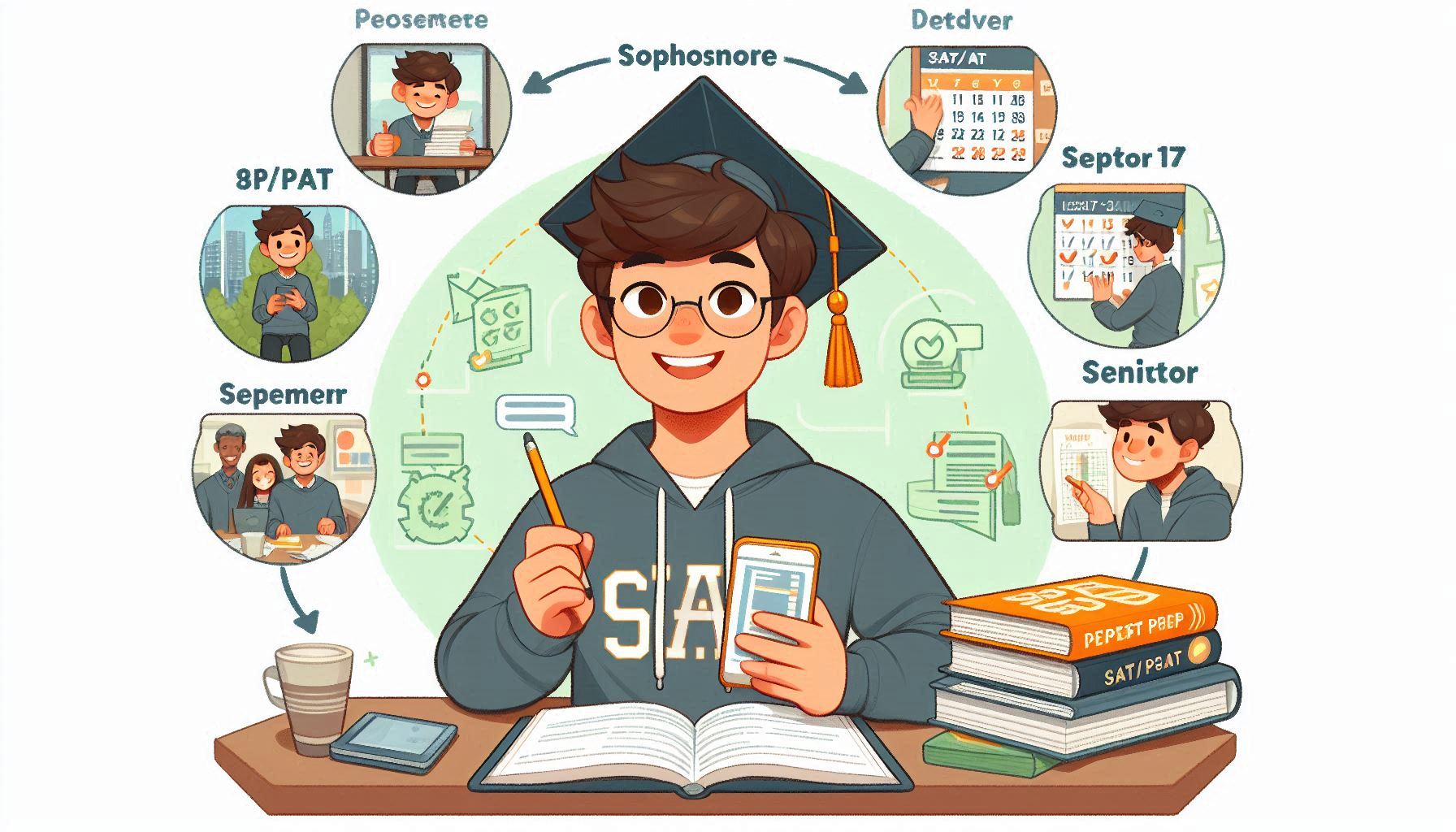For every high school student with dreams of attending a top college, one question eventually comes up: “When is the right time to take the PSAT, NMSQT, and SAT?” Timing your standardized tests isn’t just about checking them off a list—it’s about creating opportunities. From scholarships to reducing stress during your senior year, the right timeline can make your journey smoother and more strategic.

Why Does Timing Matter So Much?
Imagine trying to run a marathon without training or attempting to play in a championship without practicing beforehand. That’s what poor timing feels like in the world of standardized tests. Taking these exams at the wrong time can mean:
Missing out on scholarship opportunities through the PSAT/NMSQT.
Having too little time for SAT retakes to boost your score.
Overlapping test prep with the busiest months of high school—like AP exams or college applications.
By planning ahead, you can spread out your workload and maximize your results.
Step 1: PSAT – Your First Step Toward SAT Success
The Preliminary SAT (PSAT) is a low-pressure practice test for the SAT. Many students first encounter it in 10th grade (Sophomore year).
When to take it: Most schools offer it in Fall (October), but some may also allow a Spring sitting. Sophomore year is the perfect time for a “practice round” without pressure.
Why it matters: Your scores won’t be sent to colleges, but they give you a snapshot of your strengths and areas to improve.
Tip: Use your Sophomore year PSAT as a diagnostic test. Don’t stress about the numbers focus on what to improve for next year.
Step 2: PSAT/NMSQT – Your Gateway to Scholarships
The PSAT/NMSQT (National Merit Scholarship Qualifying Test) is taken in Junior year (11th grade). This one counts. High scores can qualify you for the National Merit Scholarship Program, which not only awards scholarships but also boosts your college application.
Best time: Always offered in Fall of Junior year (October).
Preparation tip: Use the summer before Junior year for light but focused practice. Even a few hours each week can help you aim higher.
Did you know? Students who score well on the PSAT/NMSQT often receive attention from colleges and may even get early scholarship offers.
Step 3: SAT – Planning for Success
Your SAT score plays a big role in college admissions, even as some schools move toward test-optional policies. The best strategy is to take your first SAT in Spring of Junior year (March–May). #SATPrep #PSAT2025
Why Spring of Junior Year?
You’ve already gained valuable skills from two and a half years of high school.
You still have time to retake the SAT in Summer (August) or Fall (October/November) of Senior year if needed.
It reduces stress during the peak of college applications in late Senior year.
How many times should you take it?
Ideal number of attempts: 2–3. Most students see their best scores by the second or third try because they know what to expect.
Sample Timeline for Maximum Impact
Sophomore Year (10th): Take a practice PSAT in Fall. Focus on understanding your weak areas.
Summer Before Junior Year: Start light prep for PSAT/NMSQT and SAT. Use free resources or tutoring if needed.
Junior Year (Fall): Take the official PSAT/NMSQT.
Junior Year (Spring): Take your first SAT.
Senior Year (Fall): Retake the SAT if you want to improve your score before applications.
Key Takeaways for Students
Start early, but not too early. Overpreparation can lead to burnout, while waiting too long limits your options.
Use the PSAT as a roadmap. It’s more than just practice—it tells you where to focus your energy.
Give yourself at least two chances at the SAT. Scores often improve with familiarity.
Pro Tips for Parents and Homeschoolers
For homeschool students, flexibility is your biggest advantage—use the summer months for uninterrupted prep.
Parents should encourage students to take their first official SAT by Junior Spring, leaving Senior Fall open for improvement if needed.
Final Thoughts
Your journey to college doesn’t have to feel rushed or uncertain. By starting your PSAT in Sophomore year, taking your NMSQT in Junior Fall, and sitting for the SAT in Junior Spring, you set yourself up for success—with room for improvement.
Remember, standardized tests are just one part of your application. Good planning not only boosts your scores but also frees your mind for the bigger picture: essays, extracurriculars, and making your senior year memorable.